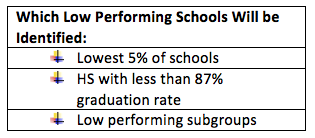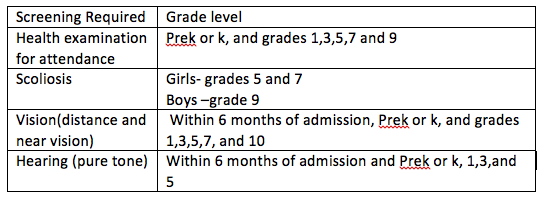At the January Meeting of the State Board of Regents
A two day meeting of the Board of Regents was held in Albany on January 9 and 10, 2017, and focused on issues related to ESSA, teacher certification requirements, career and technical education, and opioid and heroin addiction. The following provides a summary of the two day meeting of the Board of Regents.
ESSA Discussion
Every month since November, the board has focused on one aspect of ESSA. The focus this month was Supports for Improving Schools. The discussion provided an overview of ESSA requirements and recommendations from the Think Tank.
The primary goal of an accountability system is to be able to differentiate school performance to direct support to low performing schools in order to improve student outcomes. Under ESSA, states must specify how districts will be identified and which indicators will be used for the identification process.
The Think Tank used High Concept Ideas 33-36 to frame the following recommendations for the design of the New York ESSA state plan.
- Low performing schools will be required to complete a diagnostic needs assessment that examines whole school practices.
- Low performing schools will receive an annual review and develop corresponding annual plans.
- Low performing schools will tailor their school reform models using various models that are based on the results of the diagnostic needs assessment.
- New York State should not use the optional 3 percent percent of Title I allocation as a direct service set aside.
Discussions focused on the responsibility of districts to ensure that a targeted and differentiated approach is taken for each school identified as low performing by using a diagnostic needs assessment. A fuller discussion, led by Linda Darling-Hammond, focused on student success and school quality indicators. At this point in time, approximately 35 indicators have been identified as important for identifying low performing schools. The discussion examined options of other states, such as developing an index of several key indicators.
Why this Topic and Discussion May be Important for Administrators
The indicators, ultimately selected for inclusion in the state plan, will be become the framework (in addition to results from state testing) for identifying low performing schools. Subsequently the indicators will become the priority data points that need to be collected accurately and consistently. Once the indicators are selected, it will be important to analyze whether the data collected at district/school level meets the new requirements, keeping in mind that data will be needed at the district, school and cohort levels. Click here to view the presentation.
NYSED will post an online survey to ascertain which indicators stakeholders designate as important for inclusion in the NYS ESSA plan. SAANYS will notify its members via an email blast as to when this survey comes online. We strongly encourage administrators to provide input on this survey as the indicators will have direct impact on principal scope of responsibilities.
Opioid and Heroin Abuse Discussion
The purpose of this presentation was to update members of the Board or Regents on the current opioid and heroin epidemic in New York State. Between 2003 and 2014, deaths from opioid related abuses have risen from 421 reported deaths to 1,319. In an effort to address the epidemic, NYSED has entered into collaborative agreements with several state and regional agencies. In 2015, Chapter 57 was enacted which permitted eligible educational entities to provide and maintain on site opioid interventions based on participation in DOH and NYSED developed training programs. Additionally, registered nurses were authorized to administer opioid related overdose treatment. Current challenges discussed focused on the need to have increased numbers of school districts register as opioid overdose prevention programs and promote the delivery of earlier prevention education programs to students. Click here to view the presentation.
Health Screenings
The BOR discussed revisions to regulations pertaining to health services that will move to final adoption in April pending a public comment period.
Why this Topic and Discussion May be Important for Administrators
Modifies the grades for which scoliosis, vision, and hearing screenings must be provided. Changes were made to be consistent with recommendations made by NYSDOH and professional associations or boards. Proposed regulations are as follow:
Click here to view the presentation.
Expired Certifications and Supplementary Certificate
To provide increased flexibility to the field the BOR propose to allow a candidate applying for a reissuance to complete required professional development with one year prior or one year after application to NYSED. Also proposed, is the flexibility to allow a supplementary certificate to be valid for five years as opposed to the current three years. Click here to view the presentation.
Presentation by Linda Darling-Hammond
The BOR and Linda Darling-Hammond discussed ESSA and accountability systems. Click here to view the presentation.

